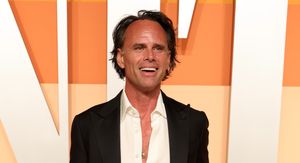The national news media spent part of this weekend marking the decade since the disappearance and presumed death of an attractive young Alabama woman named Natalee Holloway.
The 18-year-old blond, blue-eyed beauty vanished on a graduation trip in Aruba, and despite hundreds of stories on television, in print and online, and 10 years of investigations, few details have emerged. The mystery remains unsolved.
Just like the cases of 64,000 missing black women you never saw on the news.
It might not surprise you to learn the coverage of Holloway and other young, white women led media analysts to coin a term: "missing white girl syndrome."
This disturbing phenomenon was very evident that summer a decade ago, when amid all the Holloway media coverage, 25-year-old Latoyia Figueroa disappeared in Philadelphia, pregnant with her second child. Reports show it took police and the media at least 11 days to focus their attention on a mixed-race woman. Eleven days, and some heat from hotheaded TV host Nancy Grace.
The odds that the media will cover violence against LGBT people, particularly trans women of color, are even more disturbing: In 2012, Sage Smith of Virginia vanished at age 19, as did Heather Hodges, 22. Hodges was white and cisgender (not transgender), but Smith was a black trans woman. While The Advocate, GLAAD, and other LGBT media got the word out about Smith, the only mainstream coverage was focused on Hodges.
Asia Ewart wrote about the trans murder epidemic as a reporter for NYCity NewsService.
"The only time people of color make news in cases like this is when it's fatal, when they're murdered. Even then it makes little news," Kylar Broadus told Ewart. Broadus is executive director of the Trans People of Color Coalition, a nonprofit social justice organization. He explains that transgender people of color experience the most pervasive forms of discrimination because of the combination of these characteristics.
When Blake Brockington, a black transgender boy, homecoming king, and teen activist from North Carolina, committed suicide in March, his death received far less acknowledgement from the media than that of Leelah Alcorn -- a white transgender girl -- three months earlier.
Despite articles in the The Advocate, the New York Daily News and the U.K.'s Daily Mail, and attention from transgender activists Janet Mock and Laverne Cox, Brockington's case was covered mainly by North Carolina news publications and LGBT bloggers. There were few to no follow-ups.
Contrast that with the nonstop coverage of the Washington, D.C., quadruple murder, in whixh Greek-American ironworks tycoon Savvas Savopoulos, his wife, son, and housekeeper were all killed before the Savopoulos mansion was set ablaze. It's certainly a sad, horrifying story, but hardly the only violent crime that occurred in the past month. Why does this happen? Is it an obsession with wealth -- the Savopouloses were very successful -- or an intentional bias against trans women, women of color, or minorities in general?
I have what I think is a valid perspective, as someone who spent 30 years in television newsrooms. Not once, ever, have I encountered a single person who thought the life of someone brown, black, or any color other than white was worth less than that of a Caucasian.
But there have been plenty who thought they were less newsworthy.
It was November 2003, a young black girl vanished from a predominantly minority neighborhood in Connecticut, and I was the manager of the late newscast. It was the first night of the ratings period known as sweeps. My plans to lead the 11 o'clock show with this heartbreaking mystery were quickly curtailed by my boss, checking in with me just before heading home.
"She could be a runaway, we don't know if she's really missing," said the boss. "Maybe she's in some kind of trouble. Besides, what can our viewers in the rest of the state do at that hour, go out and search?"
She instructed me to pull back the crew and reporter and to find something else "more interesting to the majority of our viewers" to cover. I muttered we'd need to at least do an Amber Alert with a photograph of the girl with the police phone number in case viewers did spot her.
"Not in the 'A' block," she said over her shoulder, meaning the story of a girl missing from her home would not be seen in the first 15 minutes of that newscast.
The Black and Missing Foundation, a nonprofit media and law enforcement watchdog group formed in 2008, told theDaily Mailwhy it believes mysterious cases involving black women are largely forgotten: a lack of diversity in newsrooms. In the case I mention above, the only African-Americans working in that station that night were photographers in the field.
Another key reason cited by the foundation is that missing persons from a lower economic status are often associated with some sort of criminal activity. The city where that girl disappeared was Bridgeport, ranked as one of the 10 most dangerous cities in America.
And one of the most important reasons some stories do not get told on the news is because research shows bad news makes people change the channel or switch off the TV. Ratings can pinpoint to the second that moment when a word or an image compels a viewer to declare "Enough!" and grab the remote. Some bad news, like a plane crash, has, of course, the exact opposite effect.
A few years after my experience in Connecticut, I got promoted to producing news for the Today show. One morning we got word a black teenager went missing in the Deep South. We got to work to tell that story -- until word came that we would not.
Different boss, bigger audience, same outcome. Whoever she was, she wasn't white, and so she wasn't going to be in the news that day, even though my anchor joined me in challenging the decision.
Flash forward to 2015, when the top news stories of the past six months have been presidential politics, deadly floods, civil unrest and police brutality, religious freedom laws, marriage equality, and, naturally, runaway llamas.
Not the eight transgender women (at least) reported murdered in less than six months; by comparison, 12 trans women were killed in the U.S. in all of 2014.
If you add trans murders around the world, including four in Pakistan in just one week last month, plus the number of transgender suicides, the phrase "epidemic of violence" makes sense.
So where is the media coverage?
In April my transgender colleague Mitch Kellaway reported in
The Advocate on a
study by Media Matters, which found that the majority of trans news coverage in 2015 was dedicated to
Caitlyn Jenner's transition as well as two other white trans women: imprisoned military whistleblower Chelsea Manning and Alcorn, whose public suicide note gained international attention in late December.
Manning's and Alcorn's stories, while incredibly vital, have seemed to overshadow the national "epidemic of fatal violence" facing trans women of color daily, Media Matters' report illustrates.
Highlighting quotes from antiviolence workers like Trans Women of Color Collective leader Lourdes Ashley Hunter and Osman Ahmen of the National Coalition of Anti-Violence Programs, the report concludes that "national news networks largely ignored the murders of... transgender women of color," and that the networks have largely "failed" to invite trans people of color to comment on issues relevant to their lives.
Since I left ABC News one year ago this week, not one openly transgender journalist has stepped forward at the major U.S. television networks. I personally know of a handful in local TV who have come out and stood up as representative of a minority among minorities.
Fortunately, there are many more gay men and somewhat more lesbians moving into positions of power in America's newsrooms. Minorities still have a long way to go, although Latinos are making inroads fastest as their numbers grow in terms of audience.
You'd be very wrong if you're thinking liberals run the media; conservatives are fewer, but hardly absent.
The other bias that nobody talks about is that moral high ground staked out by authorities in both law and media to look down upon the oldest profession, the sex industry that lures so many desperate gay and transgender youth who don't know another way they can make a living.
Because some of those trans women murdered this year were in this line of work, literally lining those red-light district street corners across America, there is a reluctance, a hesitation, to afford the victims the dignity and respect they deserve. They have been misgendered, implied to have deserved their fate because of the risks they took, and otherwise treated as beneath us all.
While that kind of attitude dates back before brothels dotted the Old West, that doesn't make it any less wrong.
Granted, many people now see trans men and women in a new light, thanks to the well-received transition of Caitlyn Jenner and the well-deserved accolades awarded to journalists Janet Mock, Eden Lane, and Zoey Tur, actress Laverne Cox, and celebrity Chaz Bono. That awareness has reached the reporters, correspondents, columnists, and the editorial leadership as well.
But as the change in attitudes toward transgender Americans spreads, what LGBT readers, viewers, and consumers of news must remember is that what we see as our stories and our truth is considered content. Content is a product put out by news organizations that aim to make a profit on delivery of that product to the largest number of consumers sought by advertisers in the preferred age, gender, wealth, and location demographics.
If there's a story about a black girl gone missing, a trans woman of color murdered, or a gay or bisexual person in some trouble with the law, do not count on your local media or the mainstream to feature it prominently.
The bottom line in news coverage is that a story isn't worth telling unless something about it generates buzz, sells copies, attracts eyeballs, or gets fingers clicking.
And of course, in too many newsrooms, the person who decides worthiness is still, sadly, a white dude who can boast "a lot of my friends are (fill in the blank)."
DAWN ENNIS is an award-winning journalist and was the first openly transgender woman in American TV network news. She is the news editor for The Advocate.



















































































